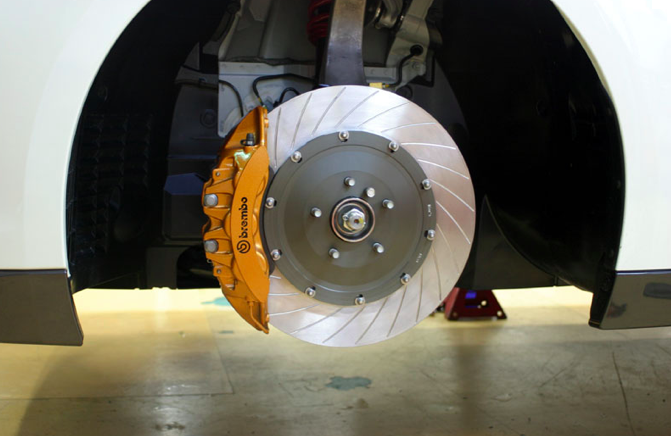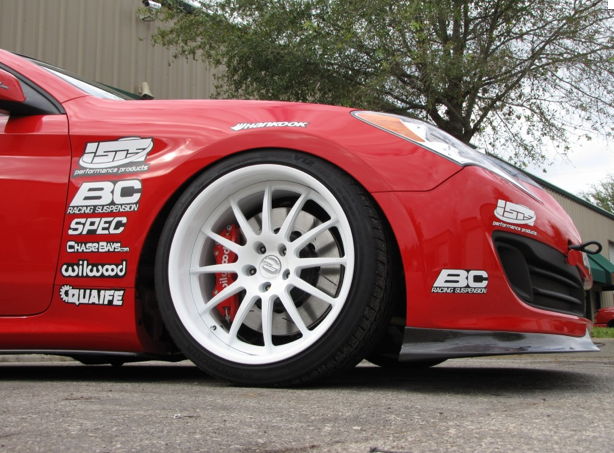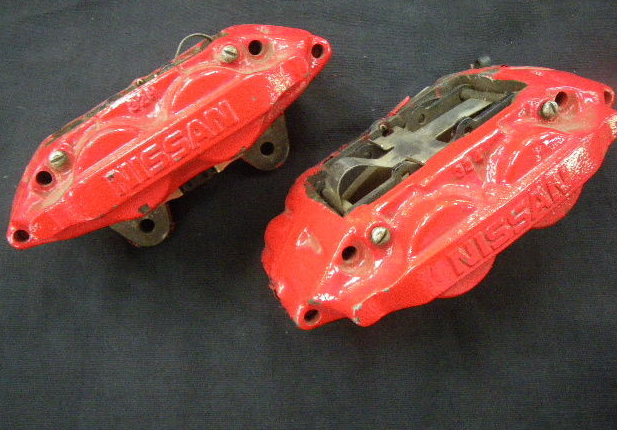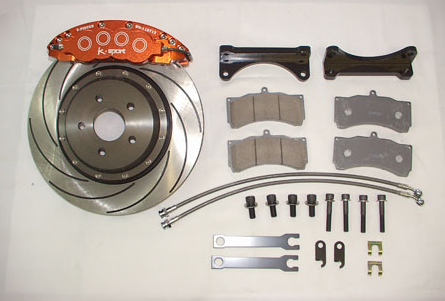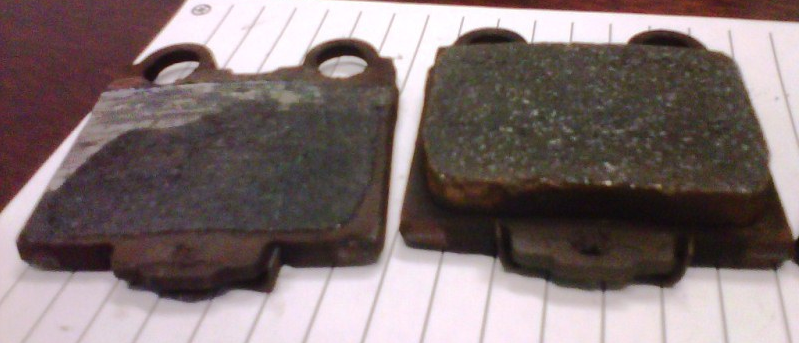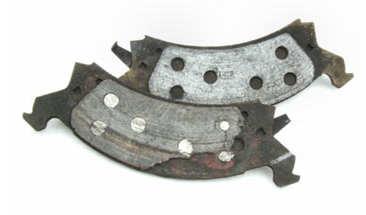| What's Hot! | Products/ Tools | EFI Tuning | Basic Tuning | Advanced Tuning | Chassis Tuning | Advertise with us |
Automotive Brakes Explained
Why do cars have different brake sizes and designs? What are Big Brake kits and why get one? Do number of pistons in the caliper matter? All this answered and more
Contributed By: Enginebasics.com
Why all the different calipers?
1. 4 pot calipers
2. 6-8 pot calipers
3. mono-block
Basic answer- cars are different. A race car is going to need a different type of brake then a van. First lets look at some basic terminology.
4 Pot calipers means that the brake calipers are holding 4 pistons. Different types of calipers (the thing that holds the pistons themselves) will hold different amounts and types of pistons. The calipers themselves are made from a variety of materials, steel and aluminum being the most popular - steel for durability, and aluminum for weight. The more pistons the better the braking power and pedal feel. The piston itself is normally made of stainless steel, which is durable. The pistons in the brake calipers are actuated by hydraulic fluid called brake fluid. (typically glycol-ether, but there are other brake fluids such as silicone based fluids out there. Brake fluid is classified by dot 1, dot 2, and so on. ) Glycol-ether absorbs the water around it which affects the boiling temperature. For example, glycol-ether 5.1 boils at 518 degrees F when dry, and only 374 degrees F when wet. Brake fluid must also stay liquid at cold temperatures or the brakes will literally freeze up. Many added safety features such as ABS require this to operate right. You have to change your brake fluid fairly often, depending on usage and type of Dot fluid you are using.
Cars use a variety of ways to increase the mechanical advantage one can apply with the brake peddle. Namely leverage and hydraulics’. Typical the brake is a ways out from the pivot point, which gives you leverage. So say it is 4 times farther away from the pivot point then the pedal cylinder. Then the pedal cylinder sends the force to the brake cylinder through the brake fluid, and the brake cylinder is larger which increase's the mechanical advantage. That cylinder then pushes the piston (which has the brake pad on it) on to the rotor, which is attached to the hub, which is attached to the wheel. However, all of this friction on the disk brake cause's a lot of heat. So most brake discs have vents in them to cool them off.
The brake disc itself is made of cast iron, which can take temperatures of around 2000 degrees Fahrenheit before is starts to melt. So to make it so that they can take more heat they make larger disc brakes, which dissipates the heat better, and it can take much more temperature before failing. This is why a race car will have much larger disc brakes then a normal car.
The brake pads themselves take quite a bit of heat as well, which can cause pad taper. Pad taper is where one side of the pad is being worn down faster then the other side, making the pad uneven. That is one of the reasons cars that have to brake more will have more pistons, as it spreads out the wear and force on the brake pad more evenly allowing better peddle feel and better distribution of force on the pad for more consistent stopping power and wear. The more pistons the better.
Bad Break Pad Wear:
However, many cars use a mono-block, which just has the pistons pushing on a block, which pushes on the disc brake. Mono-blocks are made out of aluminum, which is lighter than cast iron, but can't take temperature's near as high. It is more efficient, because it has more surface area coming in contact with the disc brake, and the heat is spread out.
Getting a good competition/street pad can be hard to do locally, but we have found that the pricing online is usually better anyway even with shipping:
Hopefully this gives you a general idea as to why there are different brake caliper designs, why some have more pistons than others, and what the purpose of big brake kits is, and why track cars have HUGE brakes.
ATTENTION READER:
If you enjoyed the information and article you just read be sure to check out our newly released book with even more exciting photo's and information:How to Turbocharge and Tune your Engine

Want to know more about your particular Make and Model vehicle? All of these vehicles are covered in the tech, maintenance and repair articles found above. Enginebasics is the wiki or wikipedia of car part, repair, how to and tuning information. Let us be the class 101 for your automotive learning.
| Ford | General Motors GM | Pontiac | Jaguar | Land Rover | Nissan |
| Toyota | Honda | Lexus | Acura | Lotus | Scion |
| Infinity | BMW | Mercedes | Mitsubishi | Ferrari | Maserati |
| Lamborghini | Volks Wagen VW | Saab | Audi | Hyundai | Kia |
| Subaru | Mazda | Chevy | Volvo | Caddilac | Dodge |
| Chrylser | Daewoo | Porsche | Mercury | Freightliner | MG |
Individual Models
| Ford Mustang | Mitsubishi Eclipse | Mitsubishi Evo | Subaru WRX / STI | Dodge Viper | Chevrolet Corvette |
| Nissan Skyline | Honda S2000 | Nissan 350z | Toyota Supra | Chevy Camaro | Lotus Elise Exige |
| Honda Civic | VW Golf | Dodge SRT-4 | Eagle Talon | Acura Integra | BMW M3 |
| Nissan 240sx | Porsche 911 | Acura NSX | Honda Accord | Toyota Camry | Toyota MR2 |
| VW R32 | Dodge Truck | Mazda Rx7 | VW Jetta | Sand Buggy | Nissan Sentra |
For the latest Automotive news and stories visit the websites below |
Our feature Build: An AWD V6 Civic



